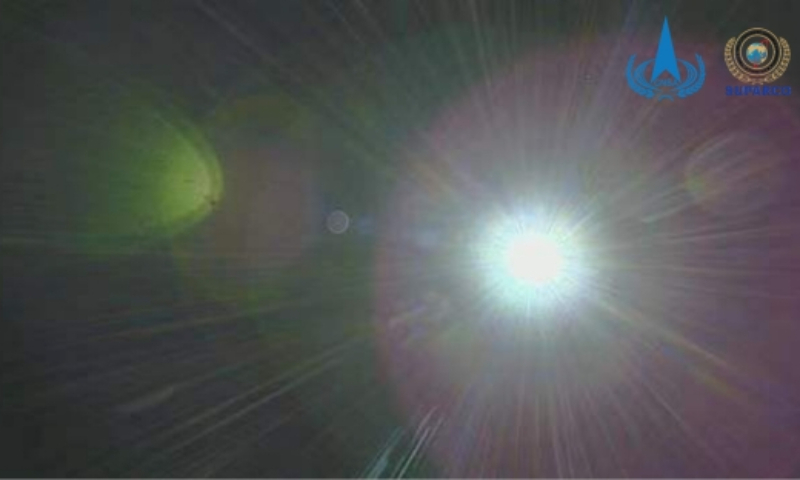China hands over data collected from Pakistan's first satellite mission on Chang'e-6 lunar probe

The first image captured by the CubeSat on May 8, 2024. Photo: China National Space Administration
China on Friday handed over the data collected from Pakistan's first satellite mission on the Chang'e-6 lunar probe to the Pakistan side, and together they unveiled the first image captured by the CubeSat, the Global Times learned from the China National Space Administration (CNSA) on Friday.
China has carried out four international projects with the Chang'e-6 probe, including the European Space Agency's lunar surface ion analyzer, France's radon detection instrument, Italy's laser corner reflector, and the first-ever CubeSat from Pakistan, the CNSA previously revealed.
The CubeSat, named iCube-Q, is a remote sensing satellite co-developed by Pakistan's national space agency SUPARCO and Shanghai Jiao Tong University. It was launched in early 2023.
The iCube-Q and the orbiter separated near the far side of the Moon in a 12-hour elliptical lunar orbit on Wednesday, and subsequently successfully captured the first image. The project achieved its goal of "successful separation and obtaining telemetry," marking the smooth completion of Pakistan's first-ever lunar project, the CNSA said.
Through this mission, the CubeSat successfully validated nano-satellite lunar orbit detection technology, and explored the cooperation model between China and Pakistan in lunar and deep space exploration, laying the foundation for deeper cooperation between the two sides in future missions.
After its grand liftoff on May 3, the Chang'e-6 lunar probe on Wednesday entered its circumlunar orbit after performing a near-moon braking procedure.
Later, the Chang'e-6 probe will adjust the altitude and inclination of its circumlunar orbit with the support of China's Queqiao-2 relay satellite, and implement the separation of the orbiter-returner combination from the lander-ascender combination.
The latter will then make a soft landing on the lunar surface at the South Pole-Aitken Basin, which is widely considered by industry insiders to be one of the most challenging tasks in space exploration.
A number of countries have struggled with this maneuver previously. Early in January, Japan's SLIM moon lander, took a tumble as it touched down on the lunar surface. This was described as a "success" by the Japanese space agency JAXA, even though the lander's solar panels were not angled properly to harness sunlight and power up the probe.
Photos
Related Stories
- Pakistan-China lunar collaboration fuels excitement for future research in Pakistan: official
- Pakistan remains steadfast in collaborating with China for peace, connectivity, prosperity: president
- Pakistani president lauds China as most trustworthy friend
- China’s Chang'e-6 lunar probe enters circumlunar orbit after near-moon braking
- China launches new satellite
- China delivers Chang'e-6 mission cube satellite data to Pakistan
Copyright © 2024 People's Daily Online. All Rights Reserved.









